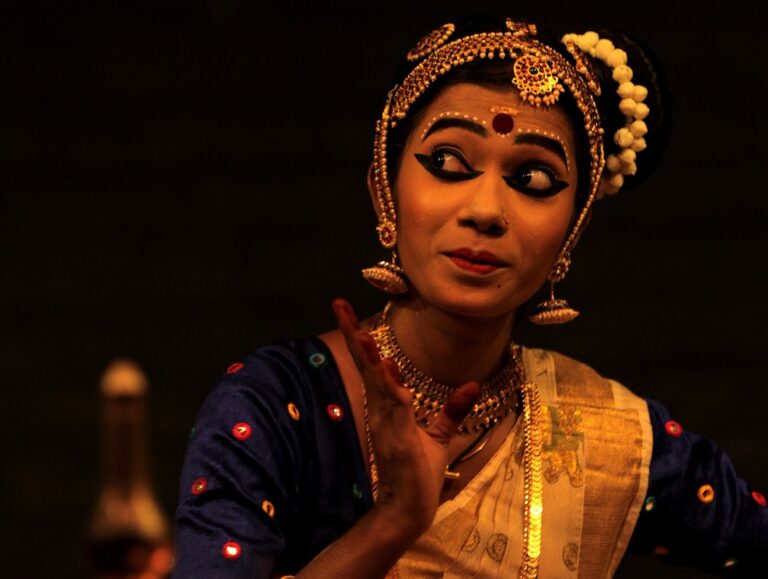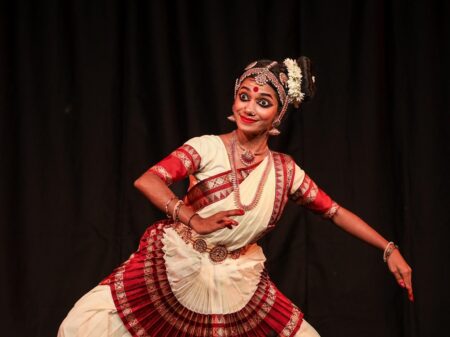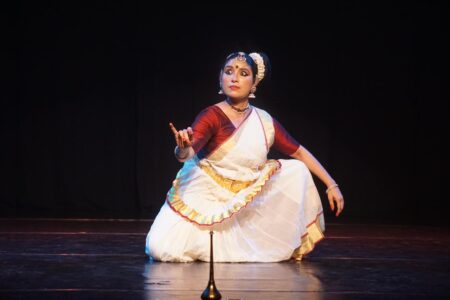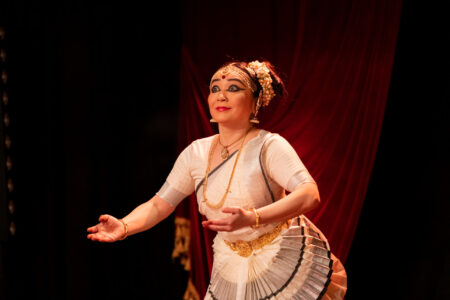Tillana, the concluding part of the Mohiniyattam performance repertoire, evokes feelings of happiness, joy, and ecstasy.
The Mohiniyattam Kutcheri starts with Nritha or pure dance items and then move on to abhinaya pieces. However after hefty abhinaya pieces like the varnam and padam the kutcheri takes a U turn and goes back to thillana which is a Nritha dominated item in the repertoire. The dancer moves in tandem with the rhythmic patterns inbuilt into the music of thillana. Intricate footwork, stylized body movements and sculpturesque poses greater prominence.
State of ecstasy
The music of tillana uses chollu-s dominated by the syllable ‘Ta’. As we know the sounds of chollu-s don’t carry any particular meaning, however the music and dance of a tillana radiates happiness. We can draw parallels of the Anandamayakosha of Panchabhuta to the irradiating happiness of tillana. If we draw parallels to the spiritual pursuit of a Jeevathma, at this stage of a tillana the soul is being elevated beyond to worldly attachments and attains spiritual bliss that transcends emotions.
Towards the end of a tillana, a few verses in praise of a deity are often sung and danced to reinforce the ecstatic bhakti feeling of the tillana. Different rhythmic patterns are used for tillana including the five patterns of tisra, chathurasra, khanda, misra and sankeerna identifying with different ecstatic states of the spirit.

Photo Courtesy : Natanakairali Archives
Video Clipping : Mohiniyattam Artist: Hridya Haridas
Tillana choreographed by Guru Nirmala Paniker (Natanakaisiki Mohiniyatta Gurukulam)




